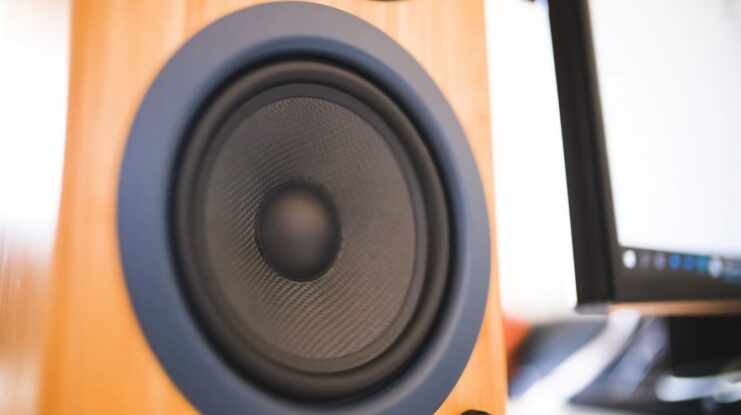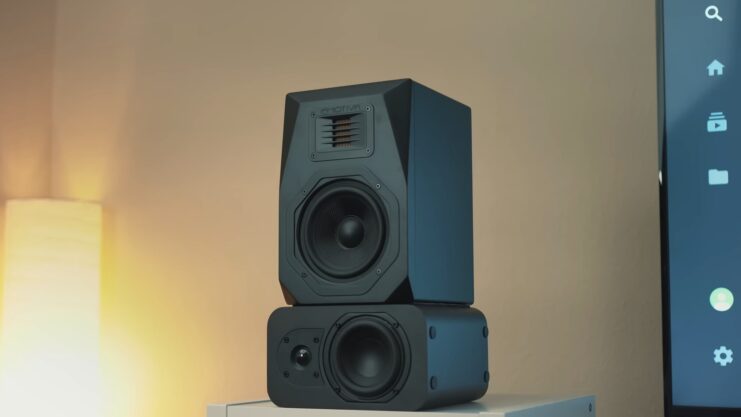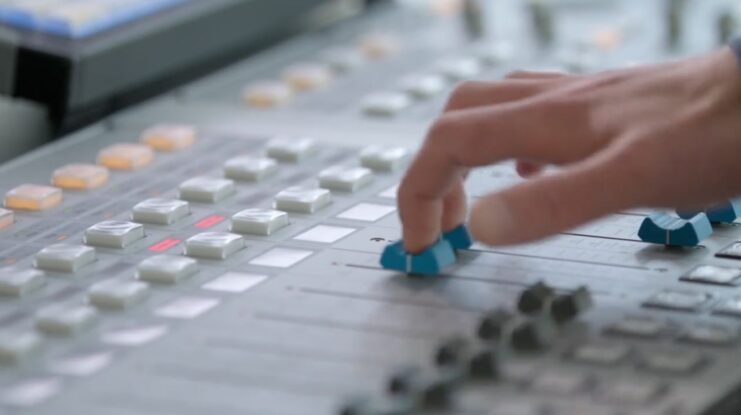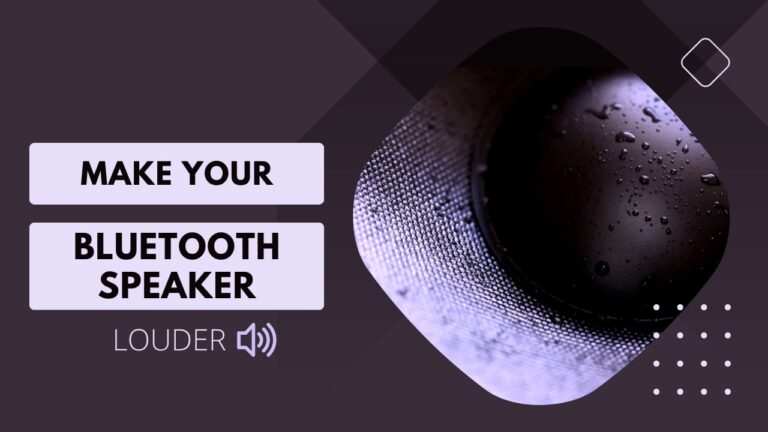Bluetooth speakers have revolutionized the way we listen to music, offering portability and convenience. But sometimes, they just aren’t loud enough.
Whether you’re trying to fill a large room with sound or just want to boost the volume for your outdoor adventure, there are ways to make your Bluetooth speaker louder. In this comprehensive guide, we’ll delve into 30 actionable tips and tricks to help you get the most out of your device.
Let’s amplify your audio experience!
Power and Efficiency of a Speaker
The efficiency of the device determines how well it can convert power (in watts) into volume (decibels). Some speakers can produce a louder sound with the same amount of power compared to others. By understanding this, you can choose or modify your speaker for maximum loudness.
| Aspect | Impact on Bluetooth Speaker | Explanation |
|---|---|---|
| Size | Louder and Deeper Sound | Larger speakers have more room for powerful components, allowing them to produce louder volumes and deeper bass tones. |
| Design | Significant Influence | The design, including shape and materials, affects how sound waves propagate and resonate within the speaker, influencing the overall sound quality and volume levels. |
| Compression | Reduced Sound Quality | Bluetooth compression decreases audio file sizes for wireless transmission but can lead to loss of sound quality and perceived loudness due to the removal of some audio data. |
| Connection Strength | Impact on Quality and Volume | A weak Bluetooth connection can result in audio drops and reduced sound quality. A strong, stable connection is essential for maintaining optimal volume and clear sound output. |
Increase the Volume of Your Device

1. Pay attention to Positioning!
The position of your speaker can significantly influence its loudness. Here are some strategic placements.
-
Use Acoustic Surfaces
Placing your device on or near surfaces that can reflect sound can amplify its volume. Hard surfaces like wooden tables or tiled floors can act as natural amplifiers. Sound waves can bounce off hard surfaces, leading to a more pronounced sound.
By understanding how sound waves reflect, you can position your speaker to take advantage of this phenomenon.
-
Avoid Soft Surfaces
Soft surfaces, like carpets or cushions, can absorb sound. Avoid placing the device on these types of surfaces if you’re trying to maximize volume.

-
Corner Placement
Placing your speaker in a corner can significantly boost its volume. This is because the sound waves get reflected off both walls, leading to a more concentrated sound. Most speakers emit sound in a particular direction. By placing it in a corner, you’re ensuring that the sound waves are directed into the room, maximizing their impact.
-
Avoid Obstructions
Ensure that there are no objects blocking the device when placed in a corner. Obstructions can dampen the sound, reducing its loudness.
2. Adjust Device Settings
Your speaker’s settings can play a crucial role in its volume output.
-
Equalization (EQ) Settings
Equalization allows you to adjust the balance between different frequency bands. By tweaking the EQ settings, you can enhance certain frequencies, making your music sound louder.
-
Bass and Treble
Boosting the bass can give the perception of louder music. However, be careful not to overdo it, as it can distort the sound. Adjusting the treble can also help in making certain elements of the music more pronounced.
-
Use Presets
Many speakers come with preset EQ settings tailored for different genres of music. Experiment with these to find the one that sounds the loudest for your preferred music type.
-
Firmware Updates
Manufacturers often release firmware updates for their speakers. These updates can sometimes improve the speaker’s performance and loudness. Regularly check the manufacturer’s website or app for any available firmware updates.
Installing these can lead to improved sound quality and volume. Apart from volume enhancements, firmware updates can also bring about improved connectivity, battery life, and other performance improvements.
3. Use External Amplifiers and Boosters
Sometimes, the built-in amplifier in your Bluetooth device might not be enough. External amplifiers and boosters can come to the rescue.
-
Use Portable Amplifiers
Portable amplifiers can give your Bluetooth speaker the extra kick it needs. They amplify the signal before it reaches the device, resulting in a louder sound. Most portable amplifiers come with a 3.5mm jack. You might need an auxiliary cable to connect your speaker to the amplifier.
How to choose one?
It’s essential to pick an amplifier that matches your speaker’s impedance and power rating. This ensures compatibility and prevents potential damage.
-
Sound Boosting Apps
There are several apps available for both Android and iOS that can boost the volume of your device. These apps can be particularly useful if you’re streaming music from your phone to your Bluetooth device.
These apps often tweak the EQ settings, amplify the audio signal, or use algorithms to enhance the perceived loudness without causing distortion.
Caution: While these apps can be effective, they can sometimes lead to reduced sound quality or even potential damage to your speaker if used recklessly. Always start with a low boost and gradually increase to find the sweet spot.
4. Consider Source Volume and Quality

The device you’re streaming from and the quality of the audio file can significantly impact the loudness of your speaker.
-
Maximize Source Volume
Before adjusting the volume, ensure that the device you’re streaming from is at its maximum volume.
-
Keep Consistent Levels
If you’re playing music from a playlist with varying volume levels, consider using apps or software that normalize the volume across tracks.
-
Avoid Distortion
While maximizing source volume can lead to louder sound, pushing it too hard can cause distortion. It’s a balancing act between volume and clarity.
-
High-Quality Audio Files
The quality of the audio file you’re playing can influence its loudness and clarity. High-resolution audio files typically sound better and louder than their compressed counterparts. Look for audio files with a higher bit rate. For instance, a 320 kbps MP3 will generally sound better and louder than a 128 kbps MP3.
-
Use Lossless Formats
Consider using lossless formats like FLAC or ALAC. These formats offer superior sound quality, which can translate to better loudness and clarity on your Bluetooth speaker.
5. Speaker Maintenance
A well-maintained device can perform at its best. Over time, dust and debris can affect your speaker’s performance. Keeping your device clean can ensure optimal performance. Dust and debris can accumulate on the speaker cone, affecting its movement and, consequently, its sound output.
Use a soft brush or compressed air to gently clean the speaker grille. Avoid using water or wet cloths, as they can damage the speaker components.
-
Internal Cleaning
If you’re comfortable with it and the speaker design allows, you can open it up and clean the internals. However, this might void the warranty, so proceed with caution.
-
Check for Damages
Regularly inspect your device for any signs of damage. A torn speaker cone or a damaged coil can significantly reduce the speaker’s loudness and make your speakers blown. Look for any visible signs of wear and tear, especially if the device has been dropped or exposed to water.
Play a song you’re familiar with and listen for any distortions or abnormalities. If something sounds off, it might be time for a repair or replacement.
FAQs:
How does room size affect the loudness of a Bluetooth speaker?
Sound is a form of energy and follows the inverse square law. The intensity of sound decreases by approximately six decibels for each doubling of distance from the sound source. A Bluetooth device will sound different in a larger room compared to a smaller one. Sound quality depends on the room’s size and the materials of the walls and floors.
Should I use a small device in a large room?
It’s advisable to avoid using a lesser-powered Bluetooth speaker in large rooms or open spaces. There are specific Bluetooth performance speakers suited for larger spaces.
What is signal dropping?
Signal dropping is a common problem where the audio signal weakens. Place the audio source close to your Bluetooth device to prevent poor signals.
Are there speakers suited for outdoor parties?
Yes, there are Bluetooth performance speakers like Soundboks and the Bose S1 Pro that are ideal for outdoor settings.
Can I use equalizer settings to make it louder?
Yes, sources like VLC Player and iTunes come with equalizer settings that can help improve overall sound quality.
Conclusion
As we’ve explored in this guide, making your Bluetooth speaker louder isn’t just about cranking up the volume. It’s a blend of understanding the basics, optimizing settings, positioning, maintenance, and sometimes even seeking external aids.
Each tip and trick has its unique impact, and when combined, they can transform your listening experience. However, it’s essential to remember that while pursuing loudness, sound quality should never be compromised.
After all, music, podcasts, or any audio content is best enjoyed when it’s clear, rich, and resonant. So, the next time you feel your Bluetooth device isn’t living up to its potential, revisit these insights. With a bit of tweaking and care, you can elevate your audio journey to new heights.
Related Posts:
- Living an Eco-friendly Lifestyle: How Small Changes…
- How to Make Your Cheerleading Squad Look More…
- Why Does My Bluetooth Speaker Keep Beeping? - Silent…
- How To Charge A Bluetooth Speaker Without A Charger…
- How To Disconnect Someone From A Bluetooth Speaker:…
- How To Connect Bluetooth Speaker To PS4? Unlock…







